This Easter Quartz explored the spiritual landscape near St Johns. Seven of us, and a dog, from within St Johns and the wider community visited Lincluden Abbey, and the 12 Apostles stone circle.
The day was set up to allow people to drop in for activities and to travel by car, or on foot. Some joined in for one event, or for the whole thing. Others kept in touch via the internet, enjoying the photos even though they were unable to be there physically.
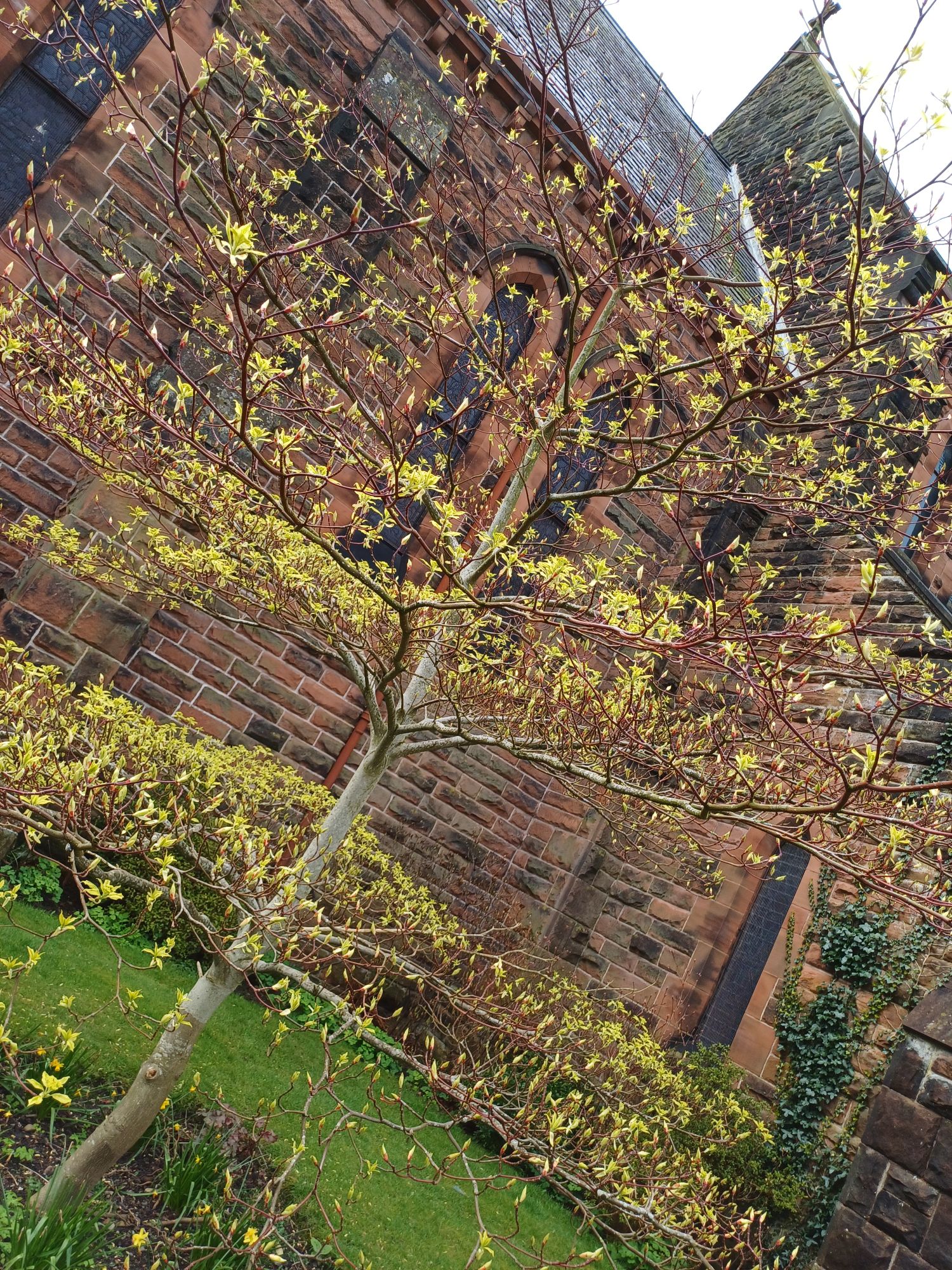
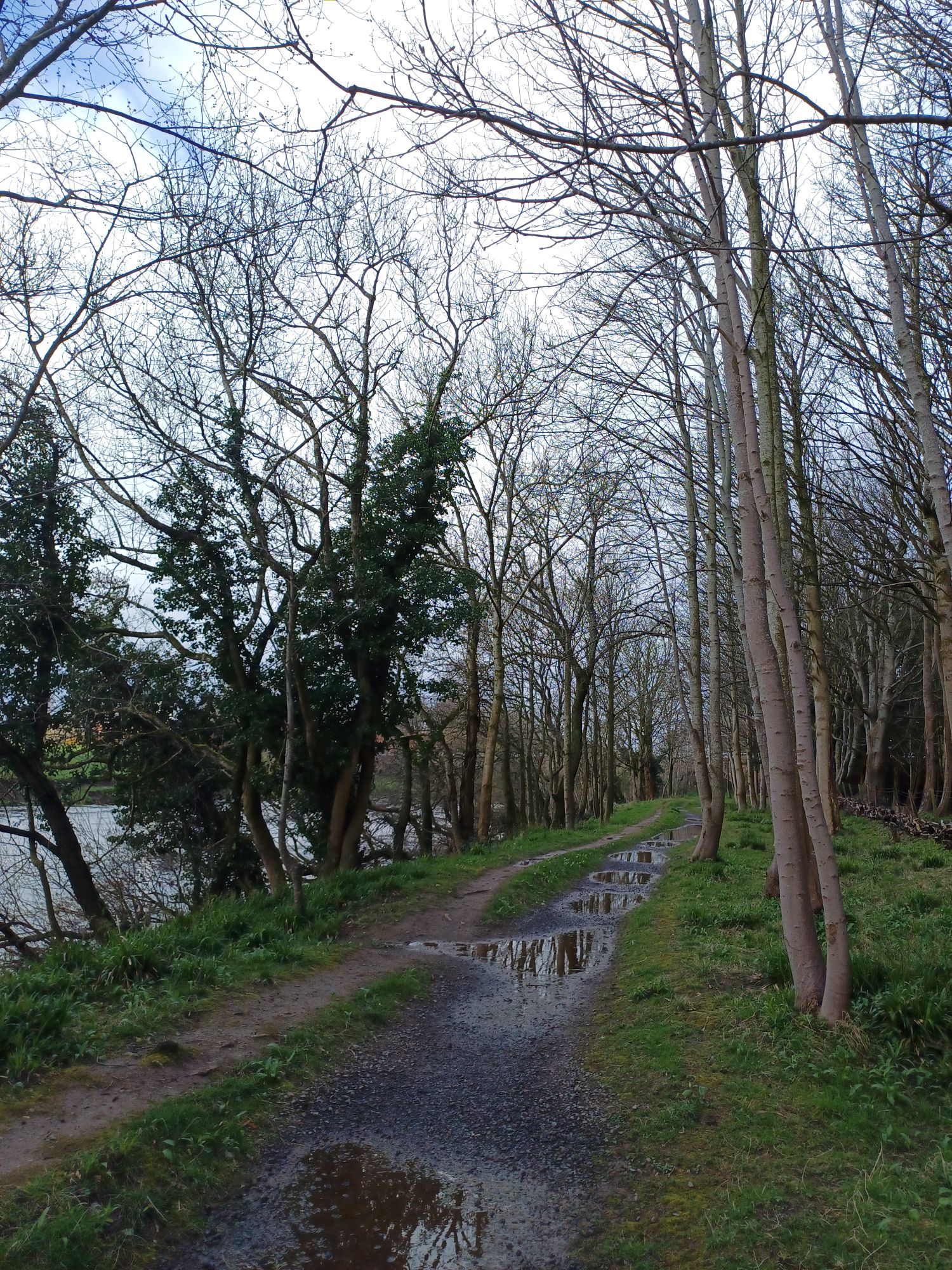
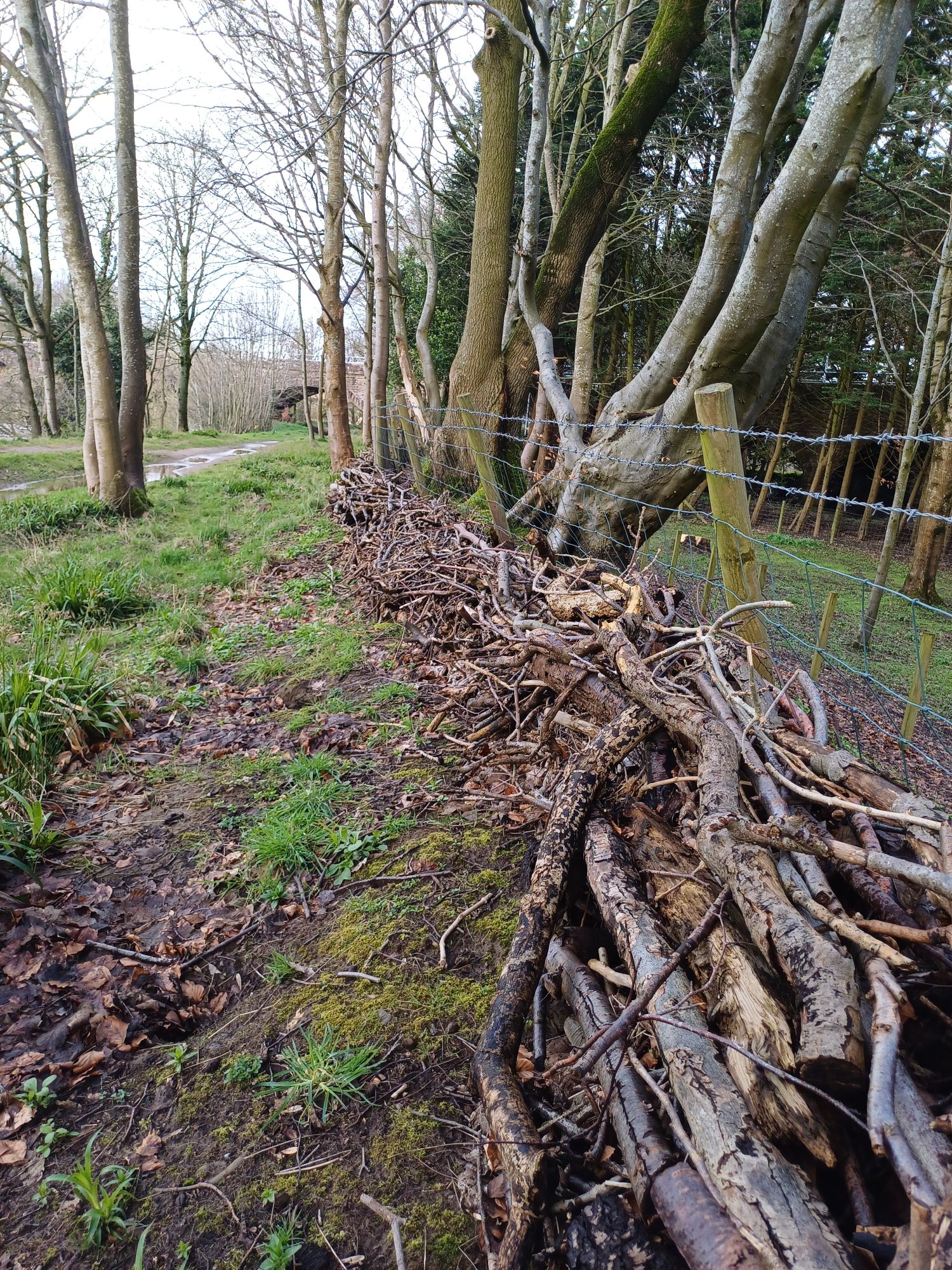
The first stage of the walk began when we met up outside St Johns church building. As well as enjoying signs of spring on the trees, we helped clad the cross with evergreens in preparation for Sunday.
We walked down towards the station and then along the path of the old railway line towards the river. We met a man and chatted about foraging and collecting birch bark, as well as inheriting and sharing skills .
The path continues by some lovely riverside villas, until it descends to the bank of the river. Passing by a wooded copse with dead hedging we reached the viaduct. We chose to cross the river using this rather than to continue to the next crossing with the A75
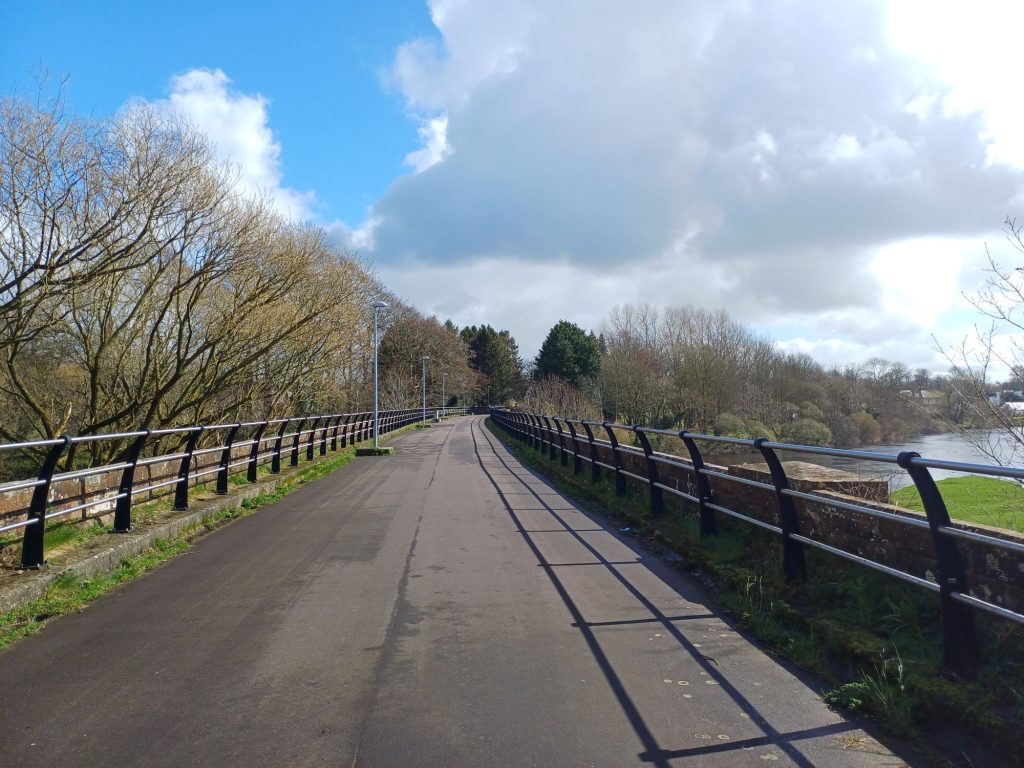
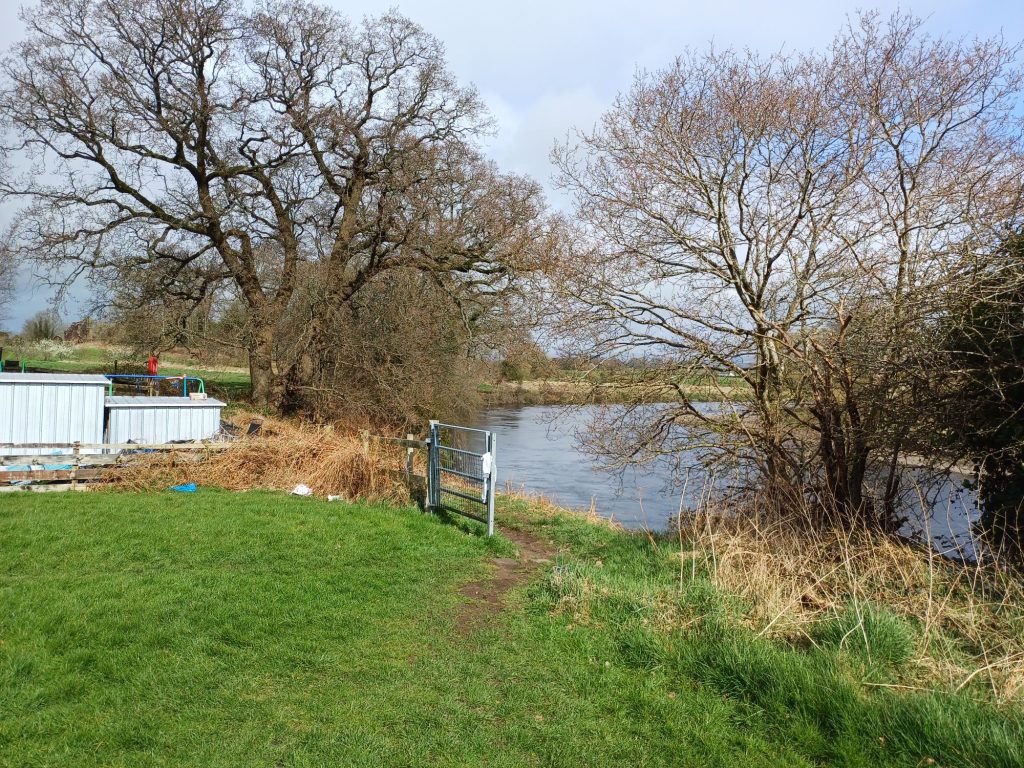
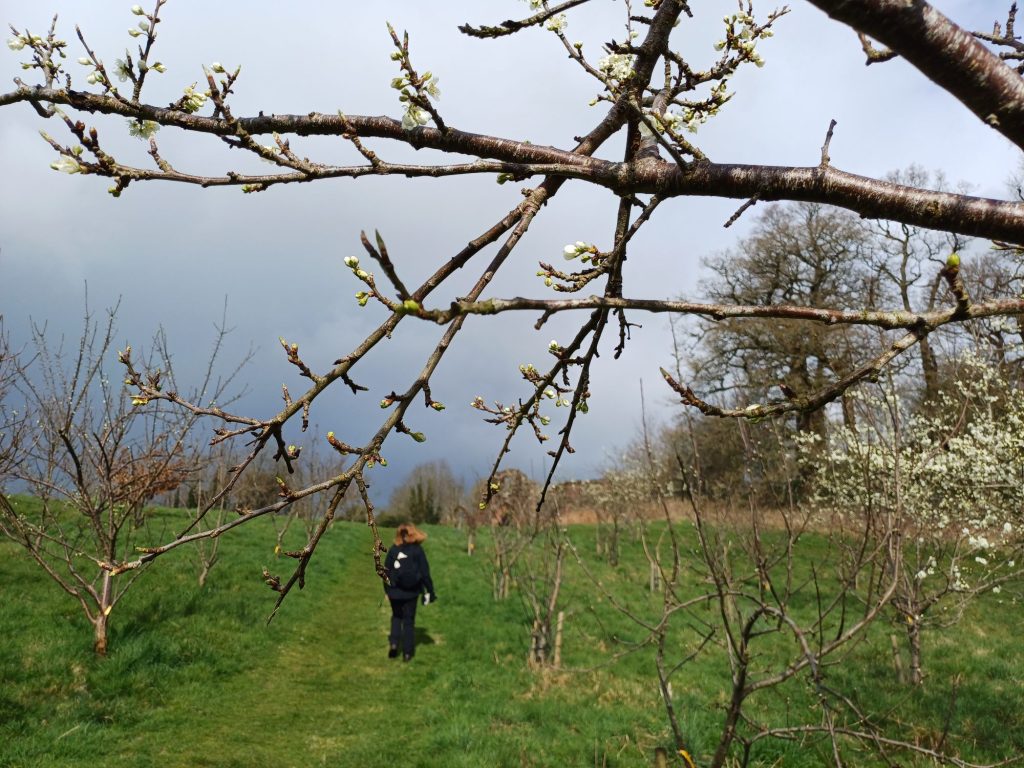
After crossing the river, we descended to the bank on the other side. The path continues under the A75 and leads you into Lincluden. We followed the path of many footsteps which led us into an orchard which was planted a decade ago and is now flourishing.
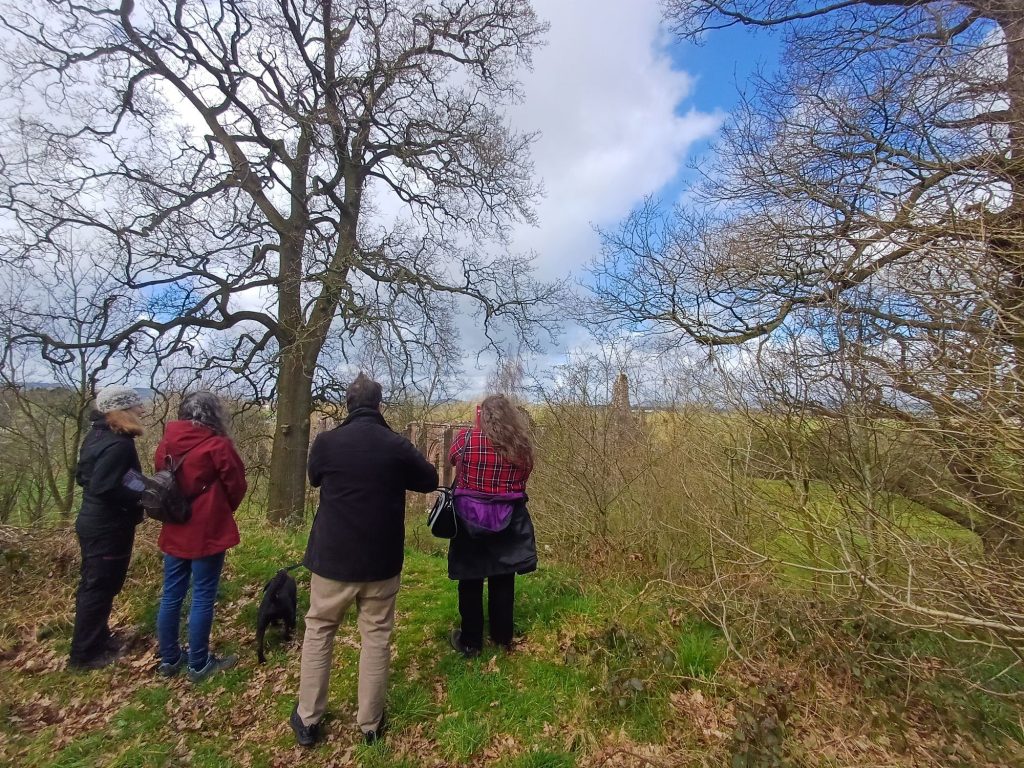
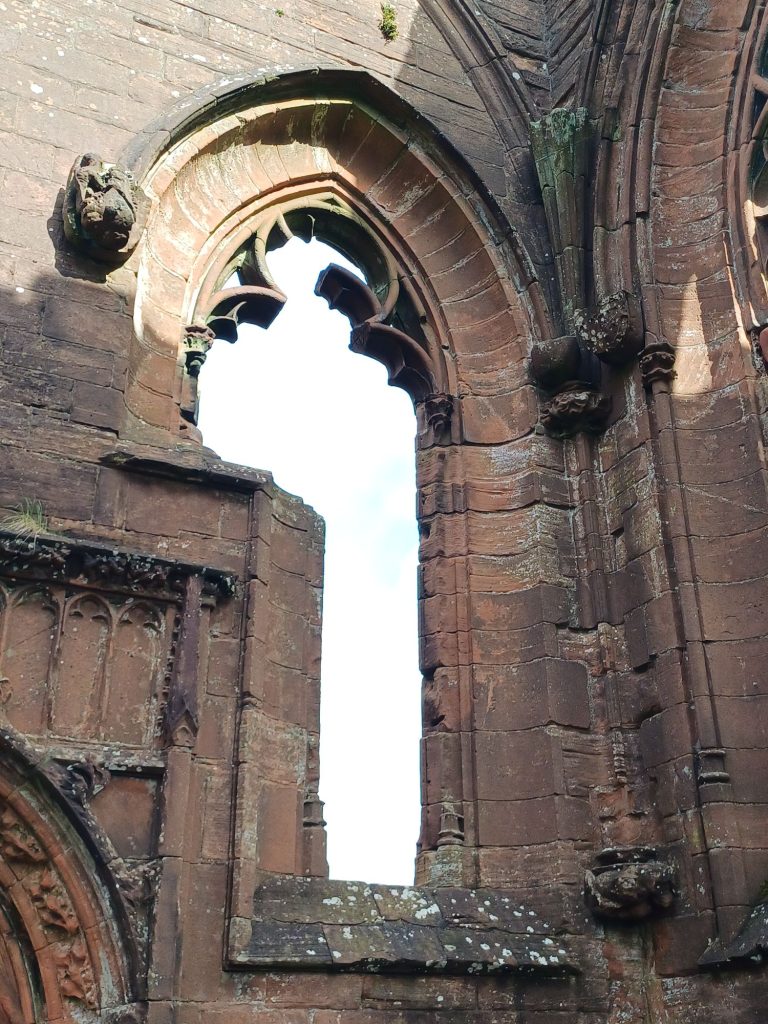
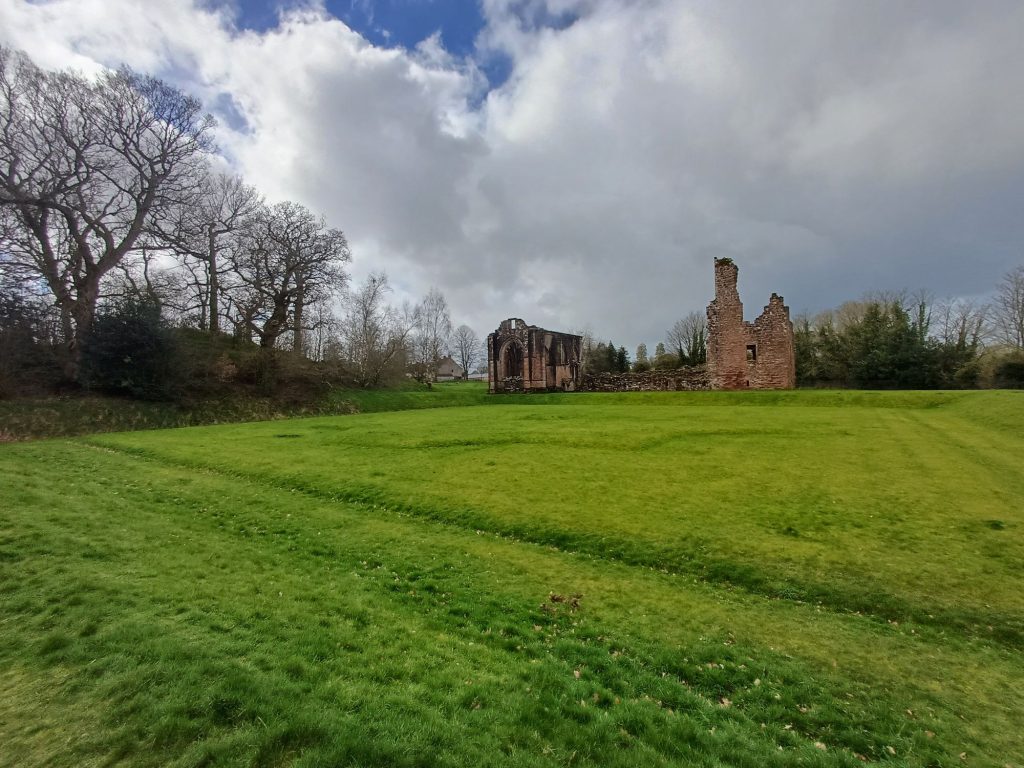
The Abbey has never actually been an abbey. It is officially known as a collegiate church (1389) which replaced a Benedictine nunnery from about the 1160’s. Princess Margaret the 4th earl of Douglas’ widow (1460) is buried there in what was a tomb and chapel built to the most fashionable of European standards. This was on a par with Melrose and Paisley Abbeys. The buildings were last used as a mansion house by the Maxwells of Caerlaverock until 1700 when it was abandoned and the stone was used elswhere (have a close look at the Abbey Arms Inn).
When you walk in you will probably be drawn to the sanctuary area. Traces of the history can still be seen. We stopped at sat opposite Margaret’s tomb and rested for a while. Blue sky and birdsong filled the air, overlaid on a rumble of traffic flowing along the A75. We found a place to rest, sharing in a peace experienced by many for centuries.
We were then joined by fellow pilgrims. At this time the wall was being used by a local lad to practice football. As our party swelled he moved outside to give us more peace.
We sang a Táize chant to mark the moment and then walked round the building to view the formal garden. You can walk along the bank and view where the Linn of the Cluden water ripples just before it joins the Nith. The current layout of the garden references other formal gardens like that in Edzel castle. There is a mound in the middle where I have previously laid out a labyrinth, and watched people practice yoga.
Our route took us to the top of the mediæval motte/viewing mound where we paused again to contemplate the place as a group before taking time to ourselves to explore the area. We then gathered together to reflect on our experience before starting on the next stage.
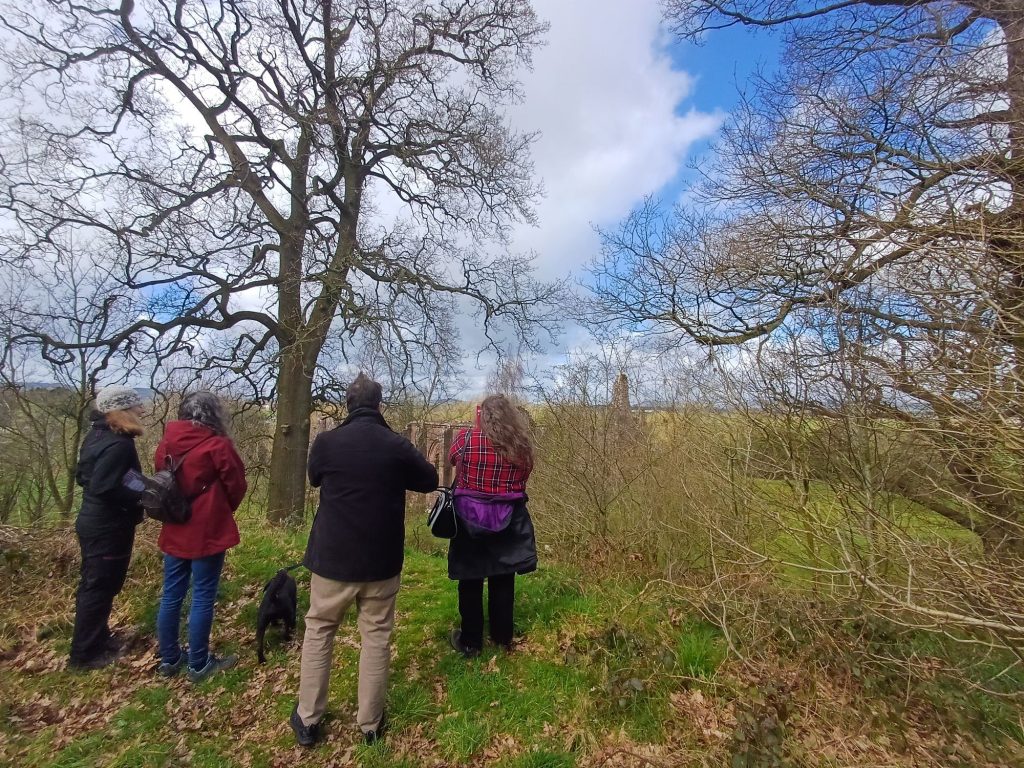
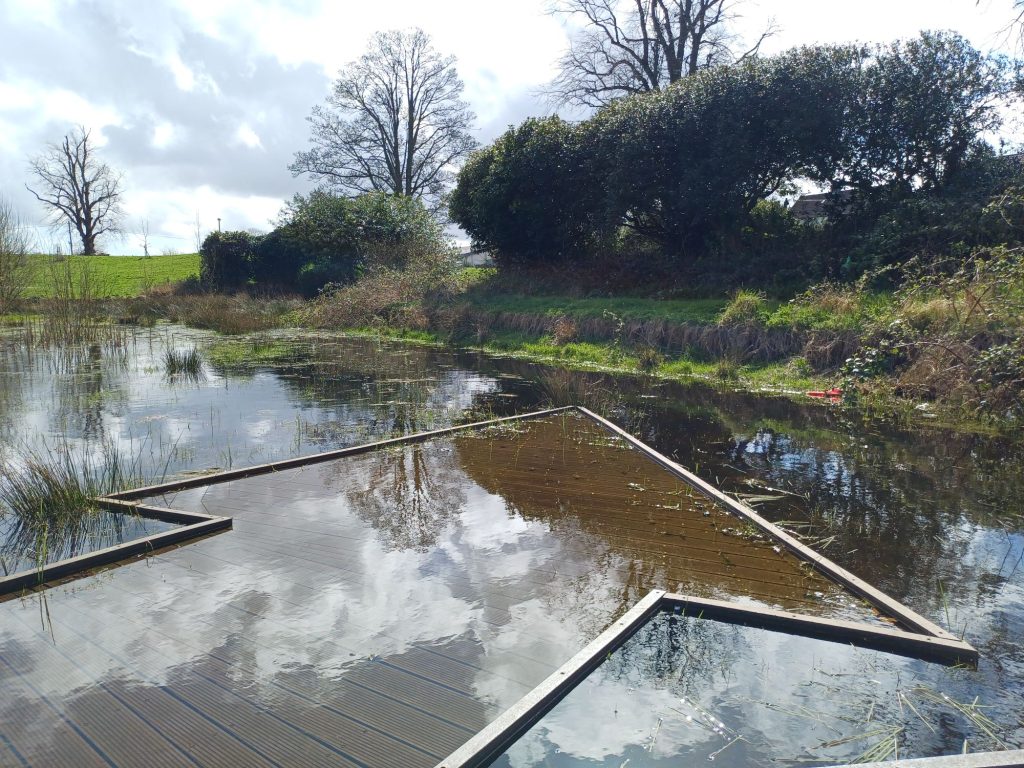
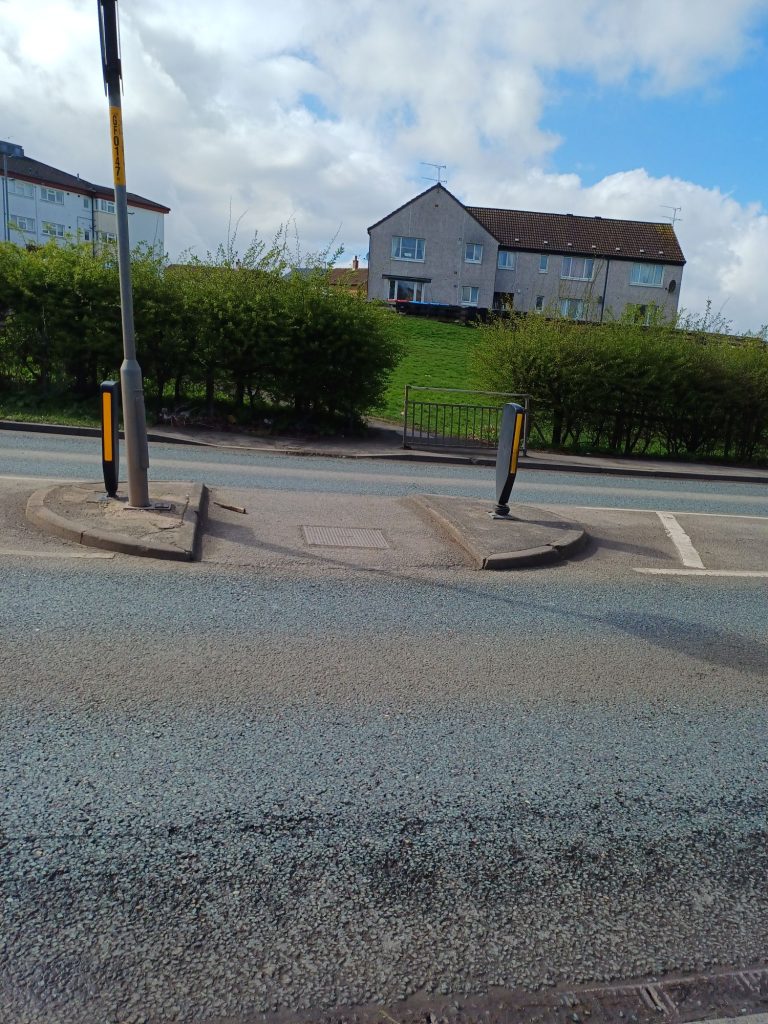
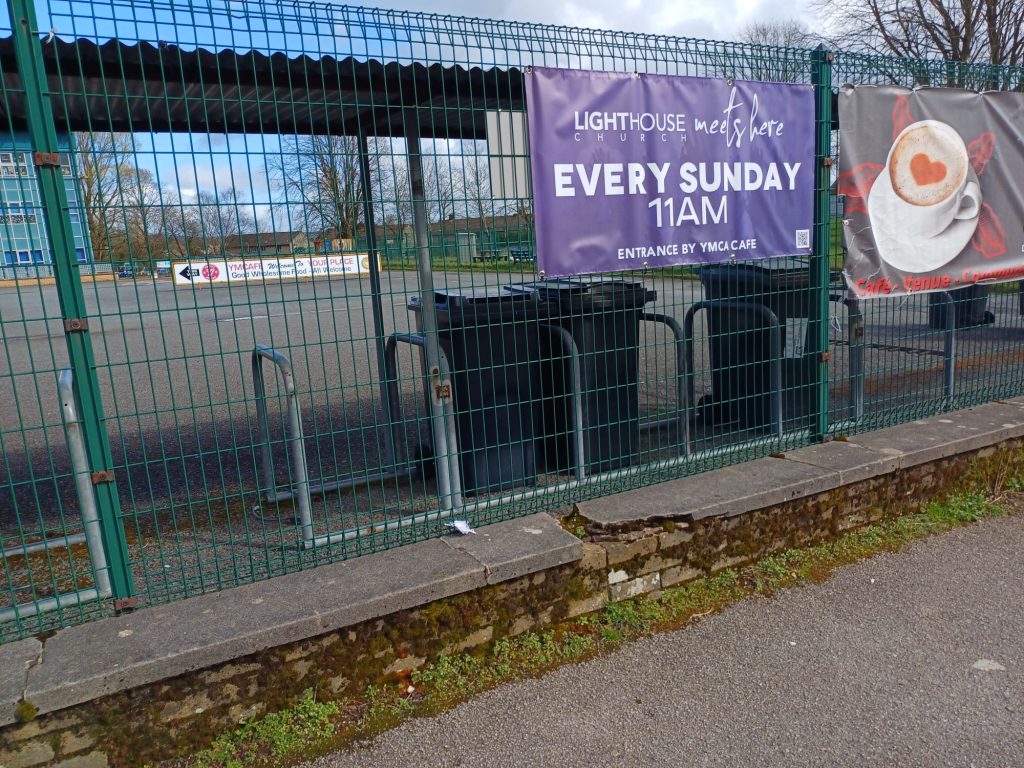
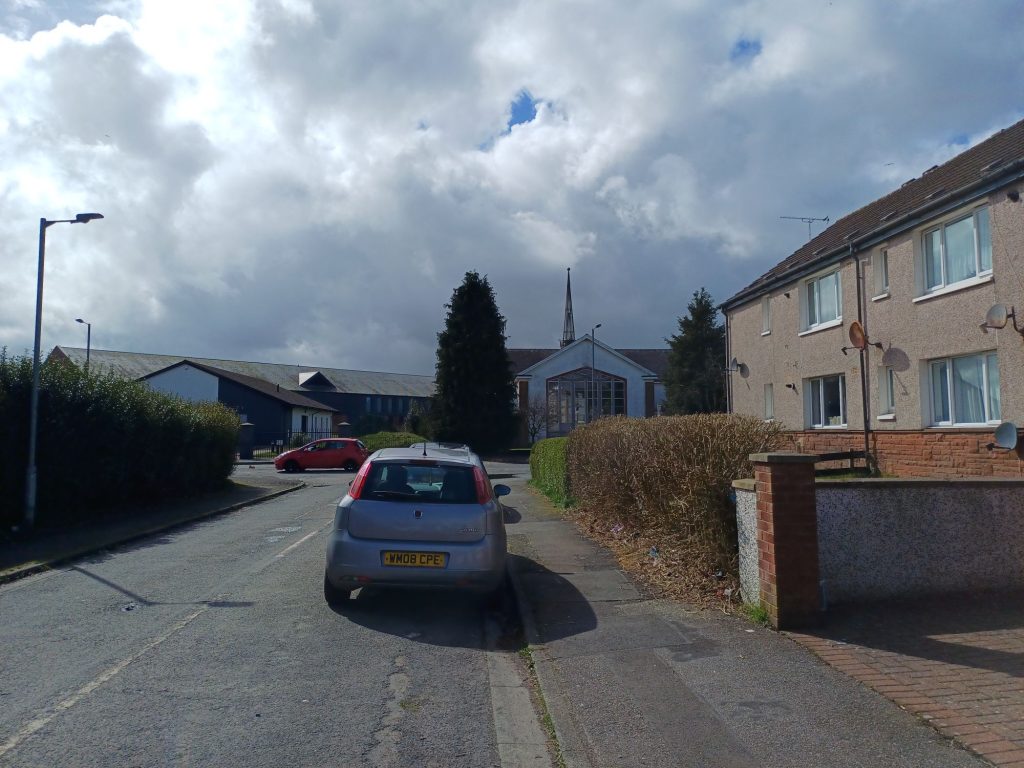
The next leg of our journey took us through Lincluden, past the community centre and into a park with an impressive pond. Crossing the A75 we entered Lochside passing first NW church of Scotland, then the YMCa where the lighthouse church meet. We called in at the shop for refreshments (Bridies and BRU for me) and continued towards where St Ninians primary school and church once stood.
There are contrasts between natural landscape and Industrial estates, between the tombs of princesses and urban priority areas, to be experienced on this walk. Dumfries and Galloway is described as “The natural place to live” but they are also home to people growing up in households dominated by poverty and addiction.
It has been suggested that going on holiday, or perhaps tourism, is a continuation of aspects of pilgrimage which survived the reformation in Scotland. People certainly go on holiday to recouperate, and tourism can be a wat to seek out new and interesting experiences. Most people would not seek out Lochside for a holiday though, and tourism is criticised as only providing a superficial experience of a place. I find that walking helps me slow down, and notice things. The necessity of finding a route through rather than drive round opens up new opportunities. On this occasion it meant that I found the best bridie I have eaten since I worked near Buckhaven, and was reminded about the massive differences in life experienced by children who grow up only streets apart.
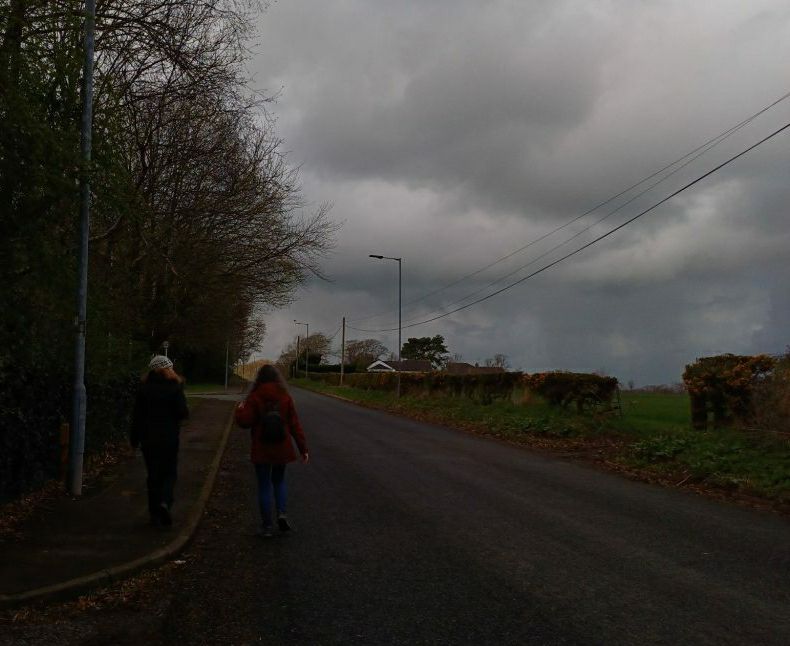
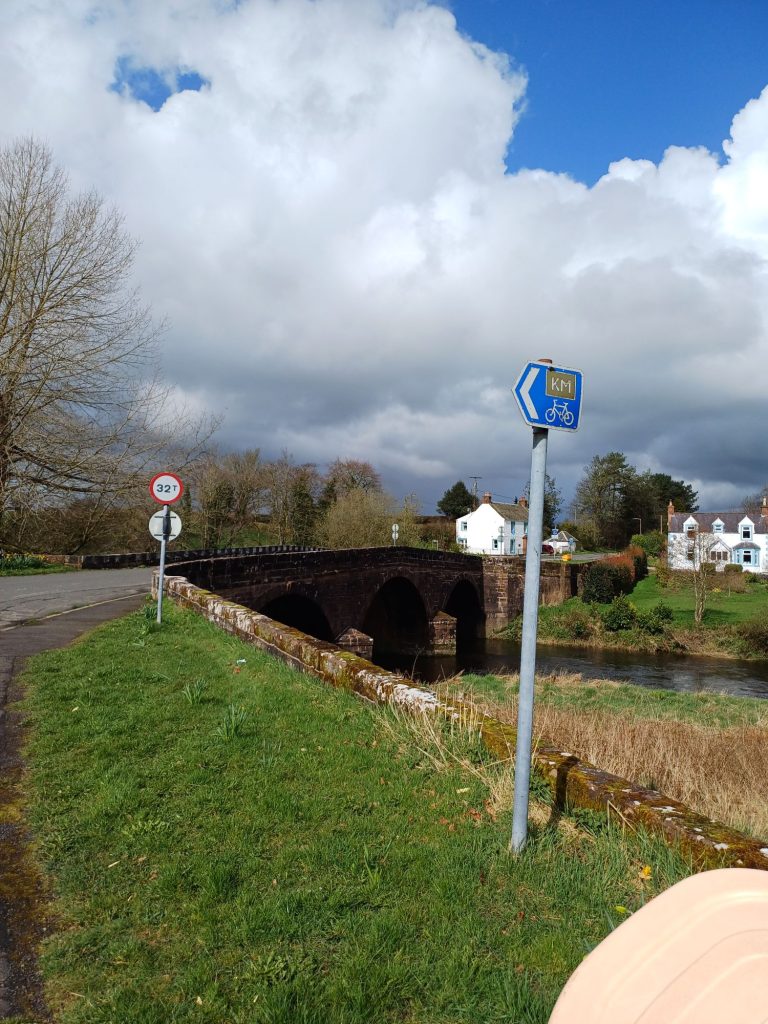
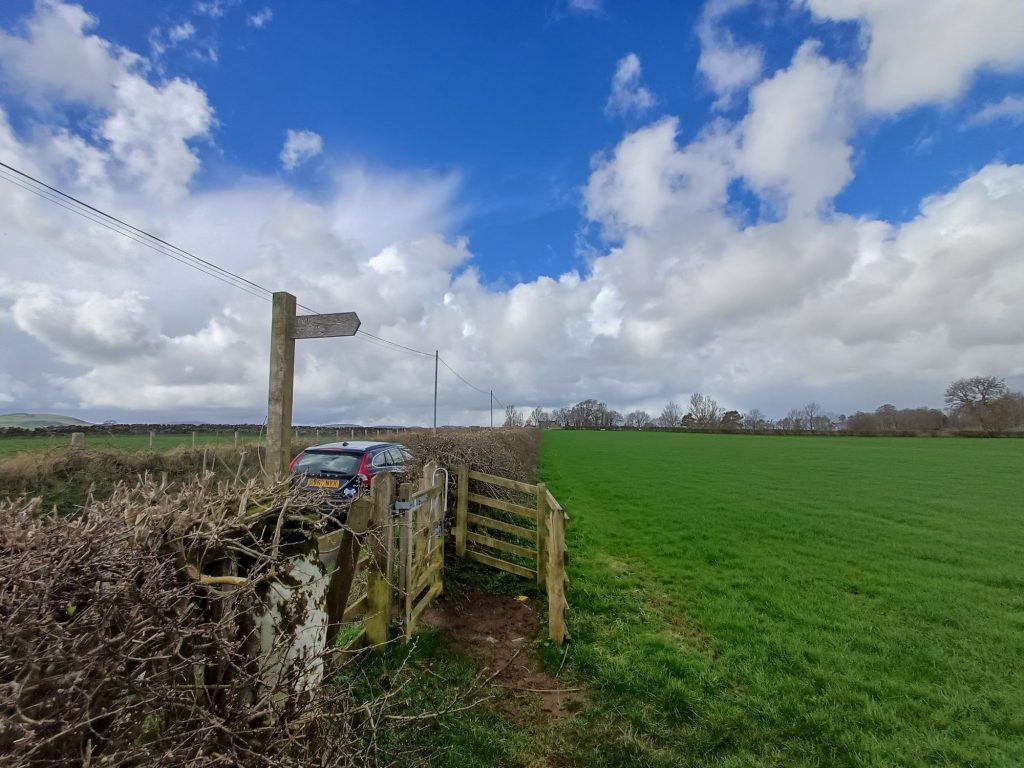
Leaving lochside we walked through more industrial storage yards out onto Irongrey road. This leads to the hamlet of Newbridge where the Cluden water can be crossed. If a pilgrim were to desire a stroll by the river there is a footpath which follows the bank of the Cluden through fields. We chose the more direct route along a short section of road until we reached the gate leading to the 12 apostles.
Once again we were met by those who had just joined for this section of the day. We paused for the opportunity to have a look around and share some cake. This circle was ancient when the Romans built roads in the area. It has been suggested that a living memory of this and other sacred sites here influence the route of their roads. Nowadays we can look at the place names and archaeological records to search out what meanings our ancestors sensed. If you stand by the circle and gaze across the strath, surrounded by low hills, with the Nith and Cluden running through it what can you sense from the feel of the landscape?
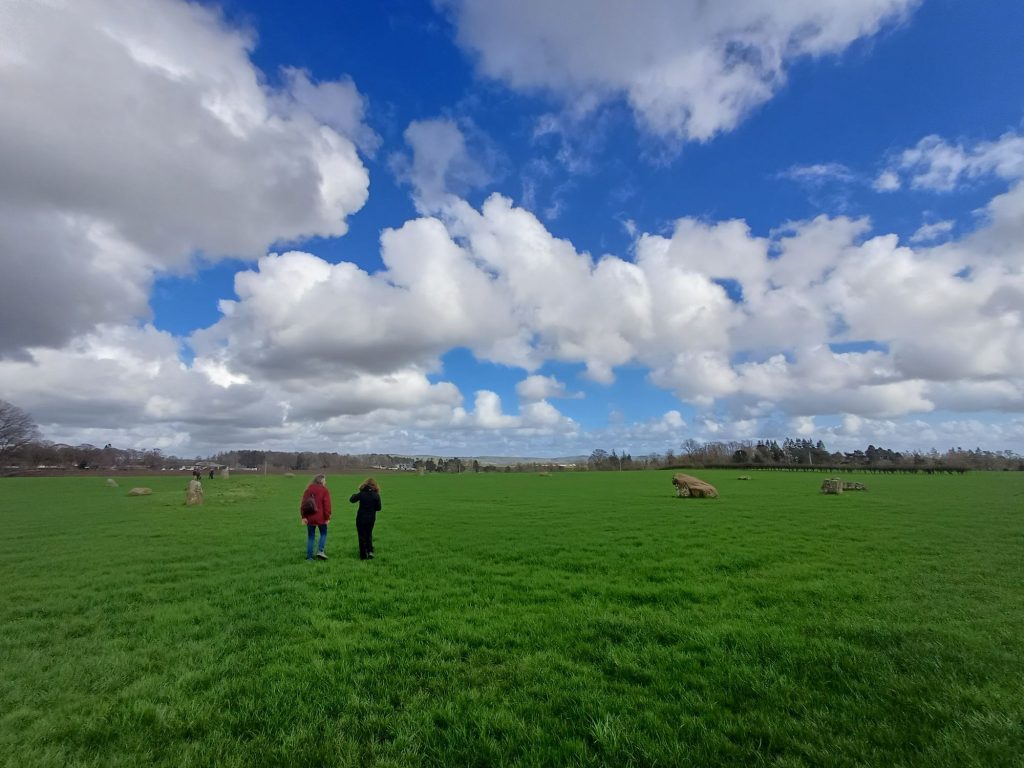
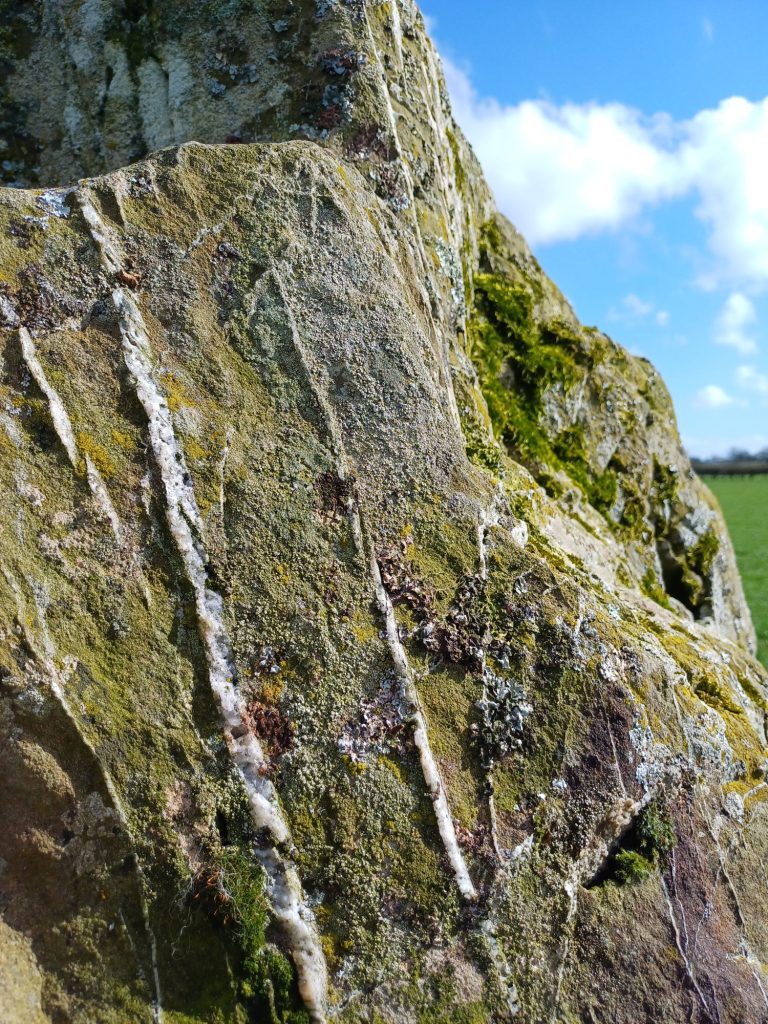
We used the circle of stones to hold our thoughts about the passage of time. Starting at the southernmost stone we walked in a sunwise direction reading poems from the psalter of birds.
The first was about spring, we then walked a quarter of the way round the circle and the year whilst reflecting on the poem and place. We finished with the winter poem at the eastern stone. This was to remember that on Holy Saturday it is traditional to remember Jesus descending to hell.
There was some discussion about this, the we walked back to the stone we started from with another Táize chant. Then we went our separate ways.
The whole day had been set up to allow people to join in where they could. Since the weather was pleasant, Kate and I decided to return on foot and call in on Sandside community garden.
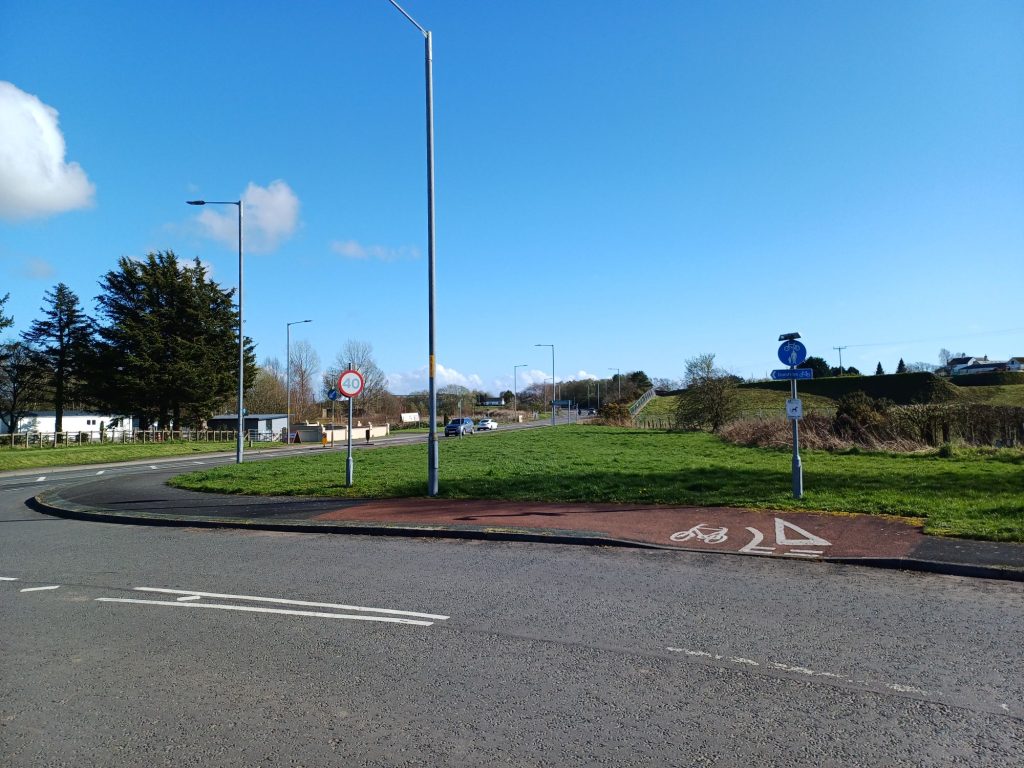
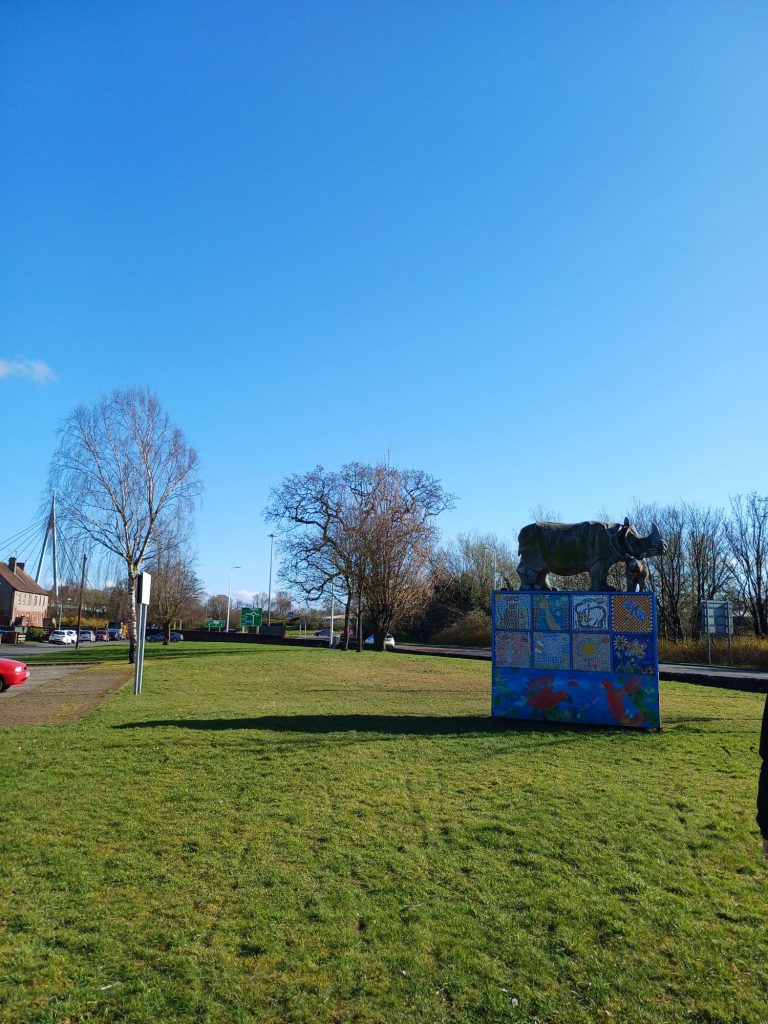
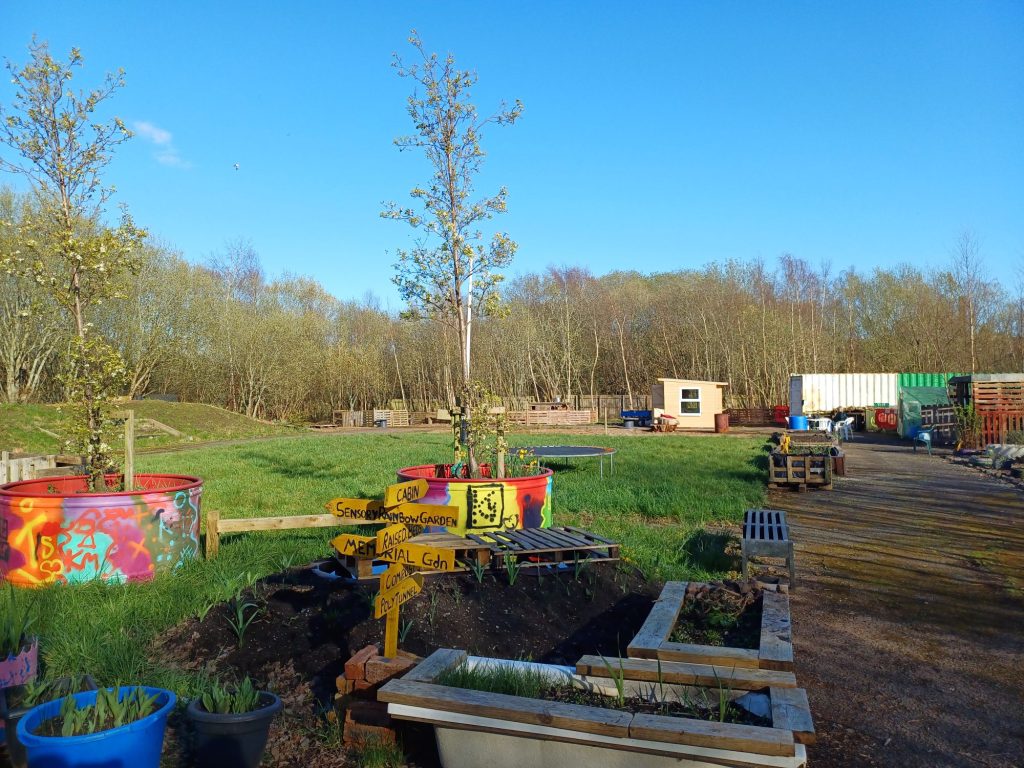
The most direct route back to St Johns follows the cycle path beside the A76. This leads back past lincluden. Be sure to stop and view the unicorn – I mean Rhino – and child. Cuckoo bridge takes you over the A75 and past “the bridge” college buildings. We then walked through Sandside heading for the community gardens. We had been invited to drop in at by a lady volunteers there. I’m sure this haven of community activity will feature in future posts! But on this occasion we enjoyed a brief introduction to the activities before heading back to St Johns to help hang the second Easter stained glass cross in preparation for the Sunday.

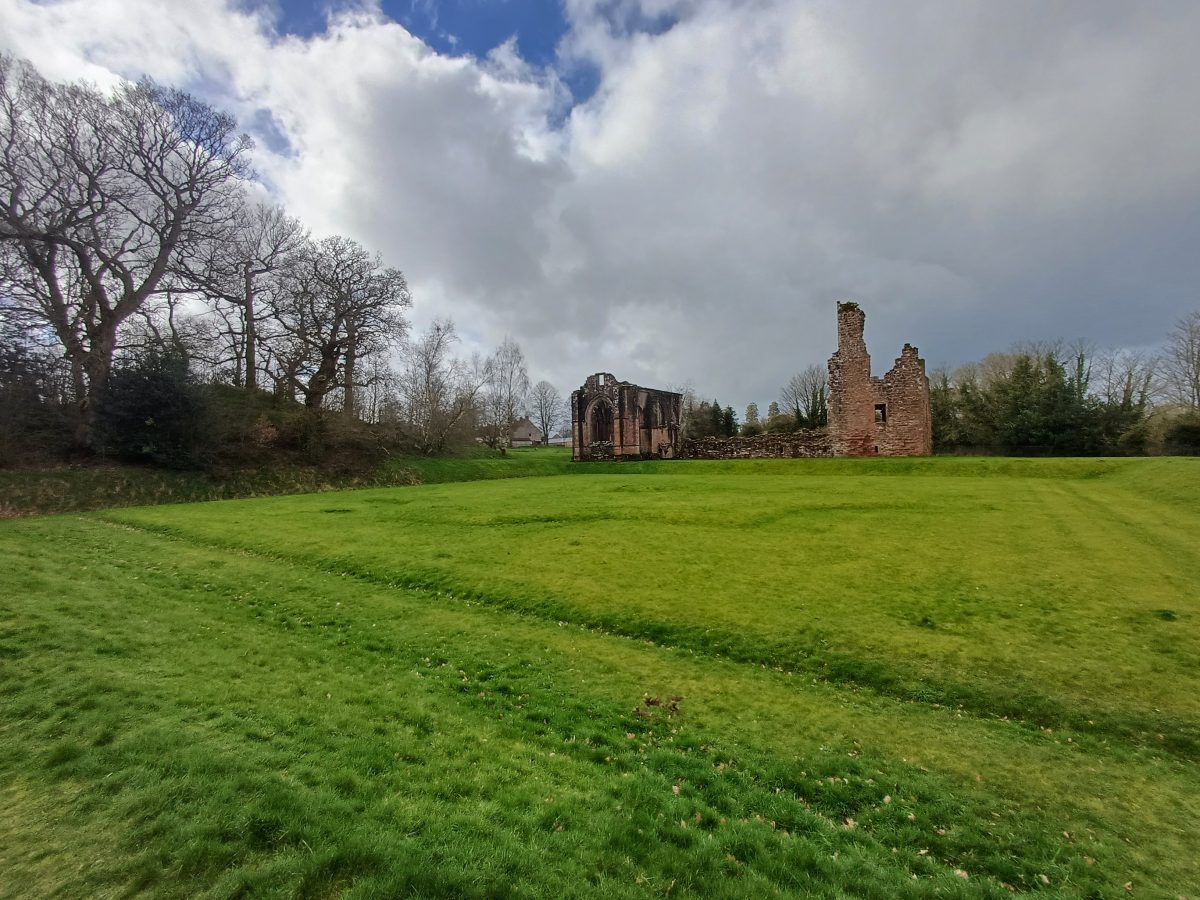
2 replies on “Easter 2024 Mini-pilgrimage”
Thank you for this insightful pilgrimage in beautiful Scotland. I am challenged to open my eyes to resurrection in my own community.
May we hope and pray, as well as inspire and work towards it!